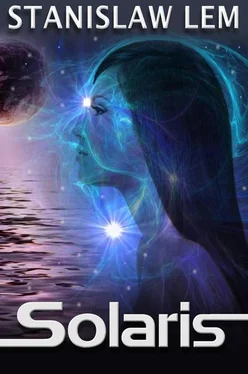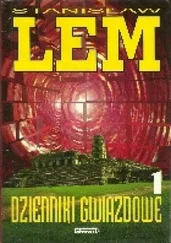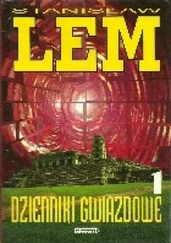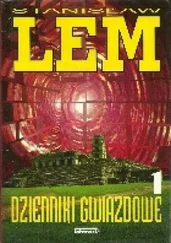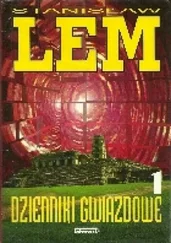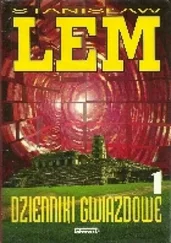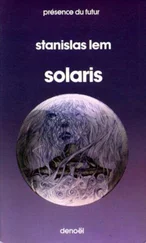They arise in a similar way, but they have a different end and nothing can be observed in them except for trembling, glowing, twinkling; we know only that they are the seat of dizzyingly rapid processes, at the limits of physically possible velocities, also known as “magnified quantum phenomena.” Their mathematical resemblance to certain models of the atom is, however, so unstable and fleeting that some consider it a side effect or even something entirely accidental. They exist a much shorter time than symmetriads — only ten or fifteen minutes — and their end is perhaps even more terrible, because following the hurricane that fills them to bursting with hard, roaring air, with a hellish swiftness they become filled with a liquid that eddies beneath a coating of dirty foam, and that floods over everything, bubbling hideously, after which there follows an explosion like a volcano of mud erupting, tossing up a disheveled pillar of remnants that for a long time afterwards descend in a macerated rain on the unquiet surface of the ocean. Some of these pieces, carried on the wind — dry as sticks, yellowing, flat, and for this reason resembling membranous bones or cartilage — can be found drifting on the waves dozens of miles from the heart of the explosion.
A separate group comprises formations that detach themselves completely from the living ocean for a shorter or longer time. They are much less frequent that the previously mentioned phenomena, and much harder to observe. The first time fragments of them were found they were completely misidentified, it transpired much later, as the dead bodies of beings that dwelled in the ocean. At times they appear to be fleeing like strange multi-winged birds being pursued by the funnels of rapidos, but this concept, borrowed from Earth, once again becomes a wall that cannot be broken through. Sometimes, though only very infrequently, on the rocky shores of islands one can see groups of flightless creatures like pods of seals, basking in the sun or lazily crawling to the sea, so as to melt into it.
In this way everyone remained within the limitations of human, terrestrial concepts, while first contact…
Expeditions traveled hundred of miles deep inside symmetriads, setting up recording equipment and automatic film cameras; the television eyes of robot satellites captured the gemmation of mimoids and extensors, their maturation and decease. Libraries filled, archives grew; the cost was sometimes high. Seven hundred and eighteen people died in various disasters, having failed to withdraw in time from colossuses whose time had come. Of these, one hundred and six perished in a single catastrophe that was infamous because their number included Giese himself, by that time an old man of seventy, when a formation that was a clear example of a symmetriad suddenly met the end that usually befalls an asymmetriad. Seventy-nine of the victims, wearing armored space suits, along with their apparatus and machinery, were swallowed up in a matter of seconds by an explosion of muddy slime whose offshoots struck down twenty-seven others piloting aircraft and helicopters above the formation being investigated. This place, at the intersection of the forty-second parallel and the eighty-ninth meridian, is marked on maps as the Eruption of the One Hundred and Six. But the point exists on maps alone, since in that place the surface of the ocean is no different than any of its other regions.
At that moment, for the first time in the history of research on Solaris, voices were heard calling for the use of thermonuclear strikes. It was to be in essence crueler than revenge: it would have meant the destruction of that which we cannot comprehend. Tsanken, the second-in-command of Giese’s relief team, who survived only thanks to an error — the relay automat had incorrectly indicated the place where the others were studying the symmetriad, such that Tsanken traipsed about all over the ocean and only came to the right place literally minutes after the explosion, seeing the black mushroom cloud as he approached — at the moment when the decision to attack was being weighed, threatened he would blow up the Station along with himself and the other eighteen crew members remaining on it, and though it was never admitted that this suicidal ultimatum influenced the vote, it can be assumed such was the case.
But the times of such large expeditions visiting the planet are past. The Station itself — its construction, supervised from satellites, was an engineering venture on a scale Earth could have been proud of, were it not for the fact that the ocean produced out of itself structures a million times larger in the space of seconds — was built in the form of a disk with a diameter of six hundred and fifty feet, with four stories in the center and two around the edges. Suspended between fifteen hundred and five thousand feet above the ocean — thanks to gravitors driven by annihilation energy, along with all the equipment usually found on Stations and large Satelloids of other planets — it was additionally provided with special radar sensors that at the first change in the ocean’s smooth surface would initiate extra power, bringing the steel disk up into the stratosphere the moment a new living formation showed signs of being born.
Now the Station was virtually deserted. Since the automats had been locked away in the cavernous depositories — for reasons still unknown to me — one could wander the corridors without meeting anyone, like in a drifting wreck whose motors have survived the demise of its crew.
As I was setting the ninth volume of Giese’s monograph back on the shelf I had the impression that the steel floor under its covering of thick foam plastic suddenly trembled beneath my feet. I froze, but the trembling didn’t recur. The library was thoroughly insulated from the rest of the structure, and tremors could be caused by one thing only. A rocket had been launched from the Station. This thought brought me back to reality. I still hadn’t fully made up my mind whether to go on the reconnaissance as Sartorius wanted. By acting as though I concurred with his plans in full, I could do no more than postpone the crisis; I was almost certain there’d be conflict, because I’d decided to do whatever I could to save Harey. The big question was whether there was a chance Sartorius might succeed. He had a huge advantage over me — as a physicist he knew the problem ten times better than I did, while I, paradoxically, could count only on the excellence of the solutions the ocean deigned to offer us. For the next hour I pored over microfilms, striving to extract any sense whatsoever from the sea of hellish mathematics that was the language spoken by the physics of neutrino processes. To begin with it seemed hopeless, the more so because there were as many as five extraordinarily difficult theories of the neutrino field, a clear indication that none of them was perfect. Yet I managed after all to find something promising. I was just copying out the formulas when there was a knock.
I went quickly to the door and cracked it open, blocking the gap with my body. Snaut’s face appeared, glistening with perspiration. The corridor behind him was empty.
“Oh, it’s you,” I said, opening the door further. “Come in.”
“Yes, it’s me,” he responded. His voice was hoarse, there were bags under his red eyes, and he was wearing a shiny rubber anti-radiation apron on elastic suspenders. Underneath it I could see the grubby legs of the same pants he always wore. His eyes ran around the circular, evenly lit space and came to a stop when he spotted Harey standing by an armchair at the far end of the library. We exchanged the briefest of glances, I lowered my eyelids, at which he gave a slight bow, and I said in a casual tone:
“Harey, this is Dr. Snaut. Snaut, this is… my wife.”
Читать дальше
